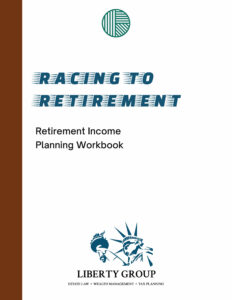Demystifying Required Minimum Distributions (RMDs): A Comprehensive Guide
Ready to shield more of your retirement savings from taxes? Join Matt del Junco, Senior Wealth Advisor and President of Financial Planning at Liberty Group, as he dives into the world of required minimum distributions (RMDs). Understanding these rules can potentially save you thousands in taxes and help provide more stability to your retirement plan.
To grasp the impact of RMDs on your retirement strategy, it’s essential first to understand the rules and regulations governing these withdrawals. RMDs apply to tax-deferred retirement accounts such as traditional IRAs and 401(k)s. The IRS mandates these withdrawals to ensure that taxes are eventually paid on tax-deferred retirement accounts.
RMD ages vary by your birth year, but generally begin the year you turn 73 if your birth year is 1951-1959 and 75 if your birth year is 1960 or later. The rules are slightly different for those born before 1951. The amount you must withdraw each year is calculated based on your life expectancy and the balance of your retirement accounts as of December 31 of the previous year. Failing to withdraw the full RMD amount can result in a penalty of up to 25% of the amount not withdrawn.
Given that RMDs are taxable as ordinary income, retirees often seek strategies to manage and potentially minimize their tax liability. There are several strategies that you can employ to minimize your tax burden.
Roth IRA Conversions
Consider converting a portion of your traditional IRA to a Roth IRA. While this generates taxable income in the year of conversion, Roth IRAs are not subject to RMDs during the original account owner’s lifetime, potentially reducing future tax burdens.
Qualified Charitable Distributions (QCDs):
For 2024, individuals aged 70½ or older can donate up to $105,000 per year directly from an IRA to a qualified charity. This amount counts toward satisfying the RMD and is excluded from taxable income, offering a tax-efficient way to support charitable causes.
Delaying Retirement Plan Withdrawals:
If you’re still working beyond age 72 and own less than 5% of the company, RMDs from your current employer’s retirement plan can be deferred until retirement.
Strategic Asset Allocation:
Consider adjusting your investment portfolio to include assets that generate lower taxable income or that align with your long-term financial goals while minimizing RMD impact.
Beyond immediate tax considerations, RMDs play a crucial role in estate planning and the transfer of wealth to future generations. Understanding how RMDs affect your estate and beneficiaries can help you structure your retirement accounts to align with your long-term financial goals and legacy intentions.
Named beneficiaries of retirement accounts can potentially “stretch” distributions over their own life expectancies, allowing for continued tax-deferred growth and minimizing immediate tax consequences.
RMDs can increase your taxable income, potentially affecting your estate tax liability. Strategic planning, including gifting strategies or establishing trusts, can help mitigate these impacts.
It’s important to regularly review and update beneficiary designations on retirement accounts to align with current estate planning goals and maximize benefits for heirs.
Understanding RMDs is not just about compliance; it’s about strategically managing your retirement assets to maximize financial security and minimize tax burdens throughout retirement and beyond. By integrating these strategies and staying informed about changes in tax laws and regulations, you can navigate RMDs effectively and help ensure your financial legacy remains intact for future generations. Whether it’s through tax-efficient withdrawals, charitable giving, or comprehensive estate planning, proactive management of RMDs can impact your retirement journey.

